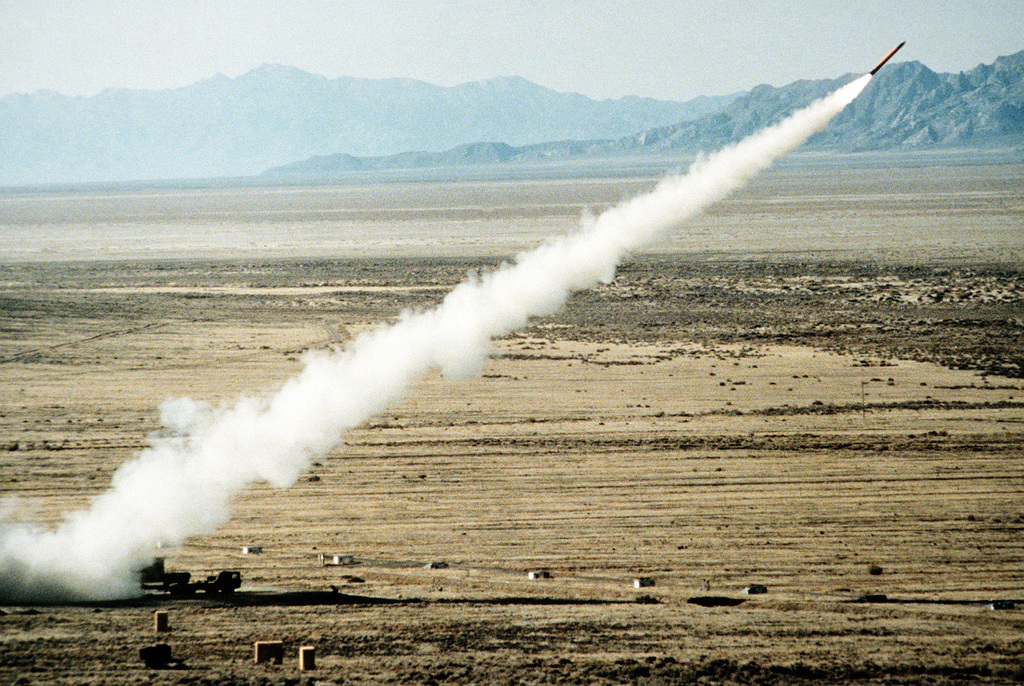
The serene environment was abruptly disrupted by the thunderous sound of a rocket engine, marking Australia’s inaugural live fire of the National Advanced Surface to Air Missile [NASAMS]. Almost instantaneously, another missile followed, leaving a trail of jet fuel in its wake. The target drones, flying at an altitude of 5000 feet and located fifteen kilometers away, were obliterated, their destruction marked by visible flashes.
This remarkable demonstration highlighted the capabilities of the 16th Regiment, Royal Australian Artillery, as they prepare to join the 10th Brigade, which is slated to become the Army’s fires brigade in Adelaide.
Lieutenant Matthew Hall, the Tactical control officer, had the honor of being the first to launch the AIM-120 Advanced Medium Range Air-to-Air Missile [AMRAAM] from the ground in Australia. He likened the experience, which took place within the Fire Distribution Centre [FDC], to playing a video game rather than deploying a live missile.
Reflecting on the event, Lieutenant Hall expressed, “It’s been a long year and everyone was incredibly thrilled to successfully launch one, particularly given it was the first firing in Australia.”
The Fire Distribution Centre [FDC], a compact space equivalent to half the size of a shipping container and mounted on an HX77, is filled to the brim with communication devices and data-collecting tools. These tools work in unison, collecting crucial data that is relayed back through radars and cameras.
Upon inspection, one would find the left wall adorned with radio equipment, while the right wall is equipped with communication panels. Dominating the front are two screens, belonging to the tactical control officer and their deputy. These screens, displaying real-time feed from infrared cameras and radars, are manipulated by a joystick for precise control.
The gathered data is meticulously scrutinized to differentiate friend from foe, as displayed on the radar. Lieutenant Hall elucidates, “The electro-optical/infrared’s primary role is akin to a conventional camera; it enables us to monitor ongoing activities much like watching regular television. Additionally, an IR camera is employed, engineered to detect heat signatures from aircraft and their jet engines.”
Potential threats identified on the FDC screens are carefully tracked and assigned a transponder code. This categorization depends on whether they are civilian aircraft, military jets, or hostile enemy planes.
Each missile, a sophisticated creation by Raytheon known as AMRAAM, weighs approximately 140 kilograms. With a length of three meters and a hefty price tag of $US1.5 million each, they form a crucial part of the defense system.
In March of 2019, a significant development occurred in Australian defense technology. The government declared its plan to merge the radar technology of CEA Technologies with the National Advanced Surface to Air Missile System [NASAMS] from Raytheon/Kongsberg. This fusion of technologies will result in a new air defense system being developed under a project worth AUD 2.5 billion [US$1.64 billion].
The substantial progress made in this defense endeavor was demonstrated during the Australian Army’s live test-firing of a Raytheon AIM-120 AMRAAM [Advanced Medium-Range Air-to-Air Missile] using the innovative NASAMS system. This pivotal step in the system’s functional demonstration comes four years after the original order was placed.
The new system features an integration between a Kongsberg launch platform, an AIM-120 missile, and a CEAMount fire control radar supplied by CEA Technologies. This combination promises a more robust and efficient defense mechanism.
Uniquely engineered to protect against both current and future air threats, the system can defend against indirect weapons, uncrewed airborne vehicles, air-dropped artillery, and aircraft. As such, it represents a significant advancement in air defense technology.
The expected deployment of this new system signifies a major upgrade for the Australian Defence Force, replacing the less advanced RBS 70 MANPAD systems currently in use.
The Army’s Chief, Lt Gen Simon Stuart, views this transition as a monumental stride towards addressing the issues outlined in the Defence Strategic Review.
“The launch of this top-tier capability sets a landmark on the path of transformation of the army, made possible through the support of our defense industry partners. The introduction of NASAMS will ensure the army’s seamlessness with the broader Australian Defence Force and coalition armies, thereby facilitating an integrated air and missile defense,” said Stuart.




